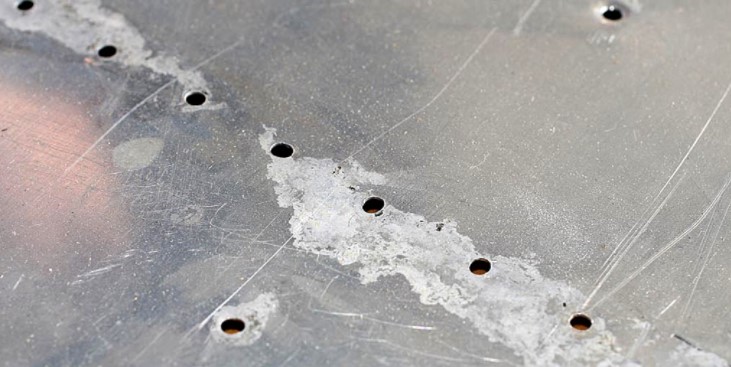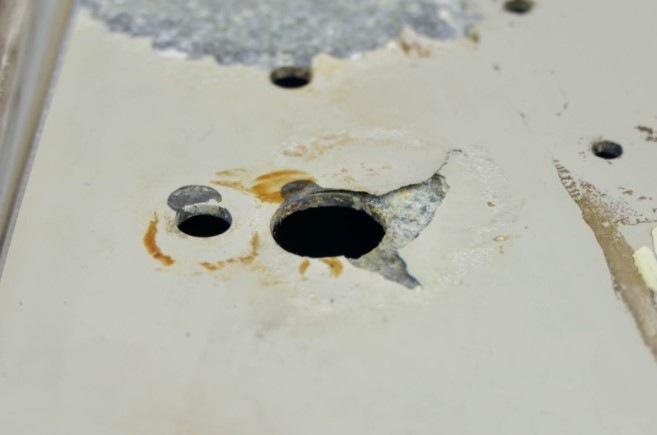Technological advancements in corrosion treatment methods have saved the aviation industry billions of dollars and reduced the associated environmental impacts. Protocols intended to monitor corrosion (including inspections and maintenance processes) have also curbed labor and material expenditures. Let's consider the downstream effects of preventative efforts on labor and material costs. How much benefit does a good strategy on preventing corrosion offer?
To answer this question, we need to consider several different factors, such as:
This article aims to provide a high-level overview of the economic impact that corrosion prevention methods have on the aviation industry. It will summarize the specific factors that can mitigate corrosion-related labor and material costs. By understanding all this, you will be able to select the corrosion treatment that is best for you and to quantify the time and money you save.

To understand how preventing corrosion reduces labor and material costs, let's take a step back and examine old practices before the adoption of modern corrosion control. When looking at the overall economic impact of corrosion across all sectors, the aviation industry comprises around 3% of the total, according to a study by the Battelle Columbus Laboratories and the National Institute of Standards and Technology (NIST). Though a small percentage at first glance, this makes it one of the single largest contributors.
Two decades ago, there were around 7,000 commercial aircraft in operation in the U.S. Of this number, some planes were considered to be at higher risk than others because they were closer to the end of their expected 20-year lifespan. Furthermore, older engineering design and manufacturing processes did not have all the corrosion prevention innovations we know today.
The cost breakdown for corrosion at that time looked like this:
Though this may seem a mind-boggling number, it is a drastic improvement over previous decades. This improvement reflects huge engineering and product advancements.
It is also important to consider that while many advancements increase the lifespan of aircraft and decrease the repair and maintenance costs, they do drive purchase prices upward because of extra resources spent in design and manufacturing. Modern equipment which reduces corrosion-related labor and maintenance costs is expensive in and of itself. Plus, resilient materials tend to be pricier than those that are prone to corrosion.
The optimization calculus of corrosion prevention and treatment is a complicated one; it must take into account upfront design decisions, the price and frequency of periodic repairs, the equipment's age, the necessary labor, and other factors. There are many variables, but it is a critical cost-benefit process that every aircraft operator must perform.
It is a known fact that corrosion has a significant negative impact on the Department of Defense's infrastructure and equipment. The consequences include reduced asset availability, a decrease in asset performance, and increased costs. In 2016, the overall cost impact of corrosion to the DOD was $20.6 billion which instigated an intensive analysis of corrosion policies, strategies, and programs.
The following is an outline of the specific actions taken by the Corrosion Office in order to reduce labor and material costs:
Additional strategies include corrosion education, training, and engagement with government agencies, academic research, and scientific organizations dedicated to preventing corrosion.
Many airlines have introduced a formal Corrosion Prevention Control Plan (CPCP) as part of their operations. Airlines' Engineering & Maintenance teams designed these prevention plans to help reduce the cost of corrosion. Inspection for corrosion is also included in an airline's MSG-3 requirements for scheduled maintenance. This proactive approach helps airlines save millions of dollars in corrosion-related inspection, maintenance, and aircraft delays.
Corrosion can also lead to lost service time, with some aircraft being grounded for 20 days or more while extensive repairs need to be made. This can have a significant impact on an organization's resources and labor. If corrosion is discovered, the aircraft structure needs to be thoroughly inspected and measured. The airline may need to submit this information to the aircraft OEM or its engineering organization for the approved repair procedure. After the approved repair procedure has been released, the maintenance personnel need to conduct the repairs, pass the inspection, and complete the appropriate paperwork & documentation. This can lead to a significant amount of billable hours applied to the aircraft's maintenance, with the addition of lost revenue while the aircraft is on the ground and not in service.

Once you've chosen the corrosion prevention strategy that best fits your company, it is important to understand how to keep the momentum in the future. The processes must be followed, but you should also stay on the lookout for ways to further decrease costs and damage. Several key approaches must be kept in mind:
Despite the great strides that have been made already, the coming years will bring new issues as current airframes end their service lives. New treatments have become the standard, and environmental policies continue to evolve. Proper prevention in the modern era necessitates large upfront expenditures, strict engineering, and many resources. However, the consequences of this investment on your aircraft are obvious in the form of improved lifespans, safety, performance, and environmental impact. This bit of extra money upfront should be viewed as preventative maintenance - it will save you far more in the long run.
By understanding the potential savings afforded by the proper methods for preventing corrosion, your aircraft can cost far less in the long run and achieve a much longer lifespan. As we discussed, technological advances during the design, manufacturing, and maintenance phases of aircraft production and operation have evolved to drastically reduce corrosion-associated costs, time, and damage. Get in touch with an Av-DEC representative to find out which products will meet your aircraft's needs.